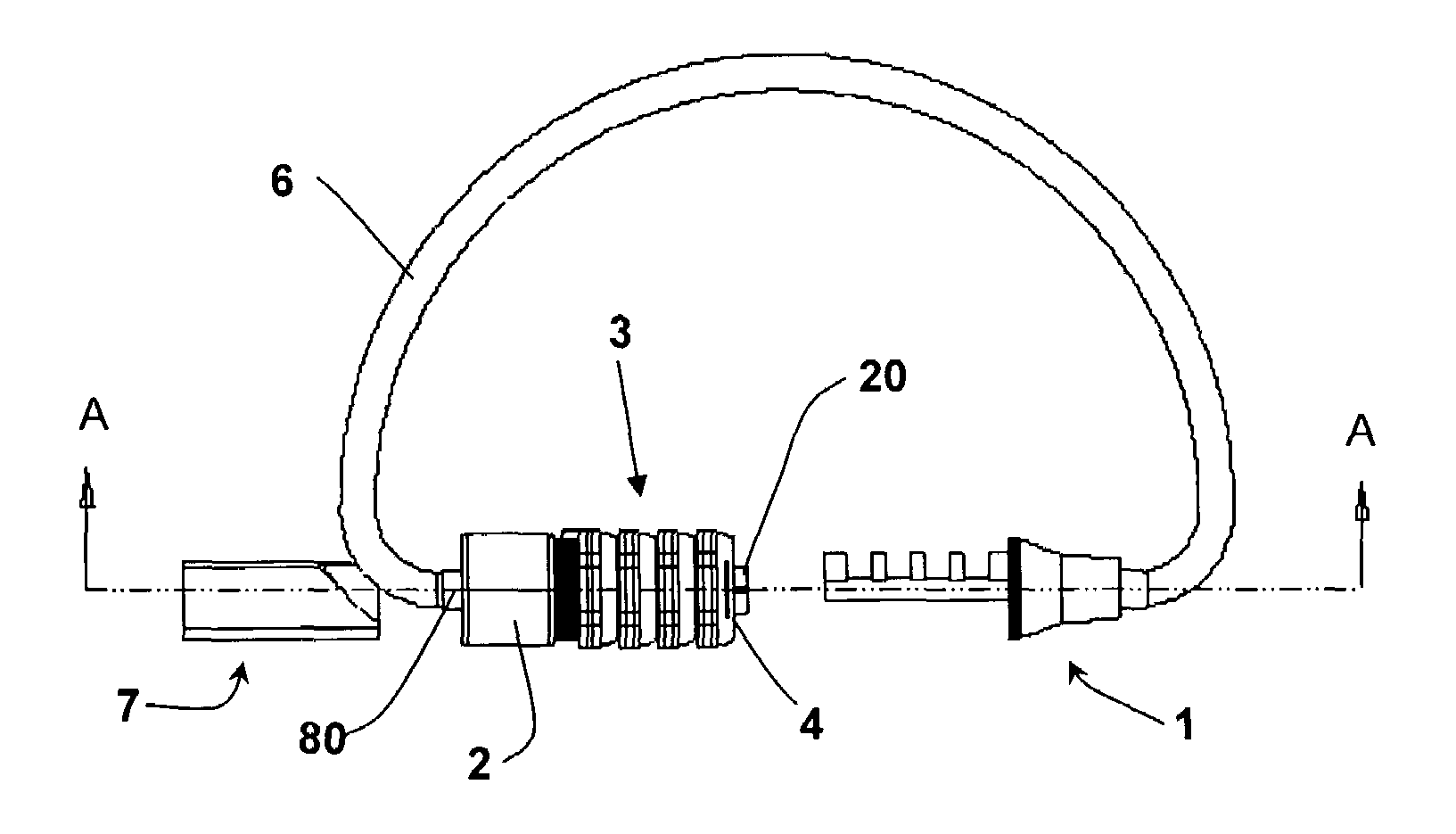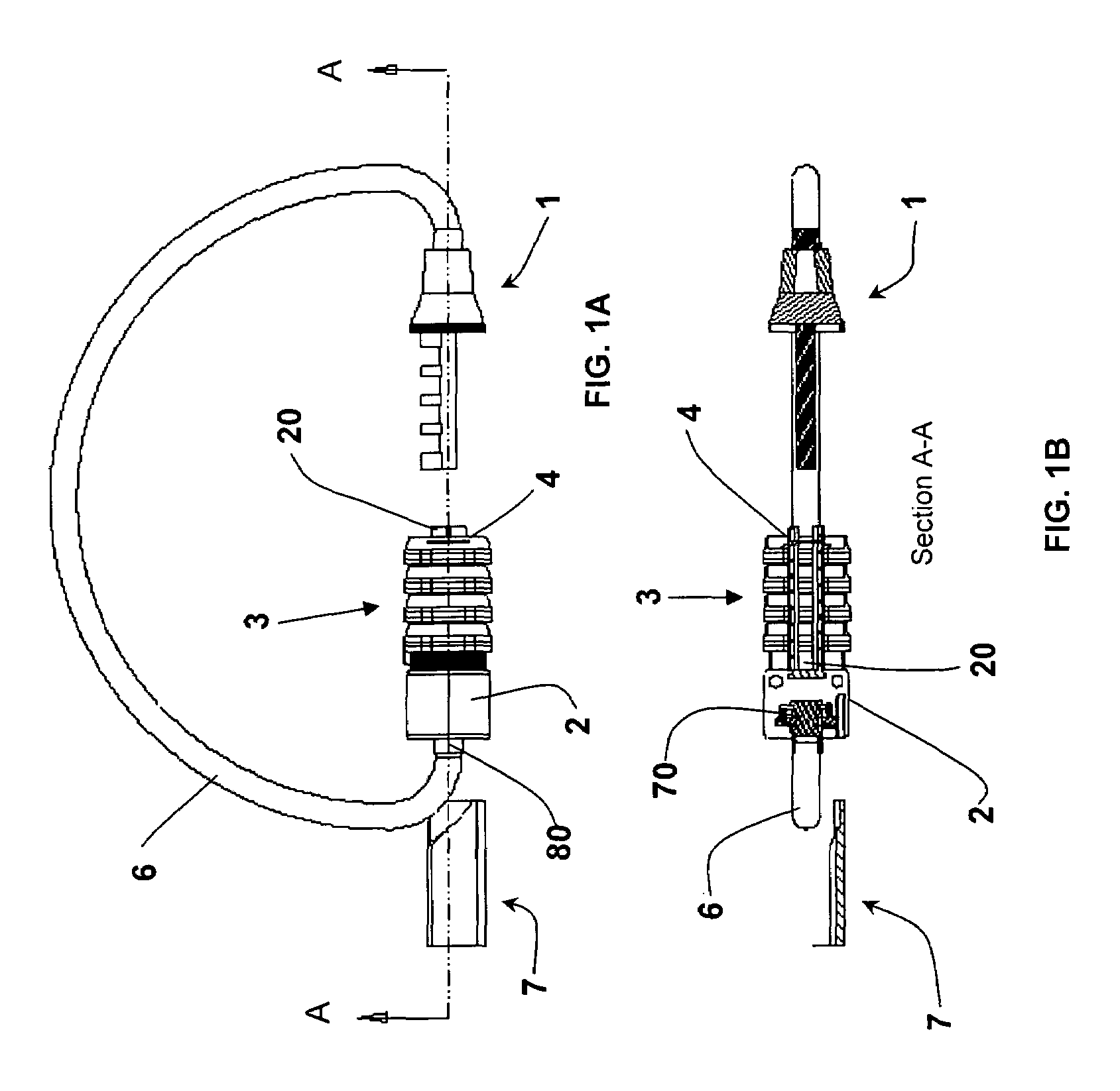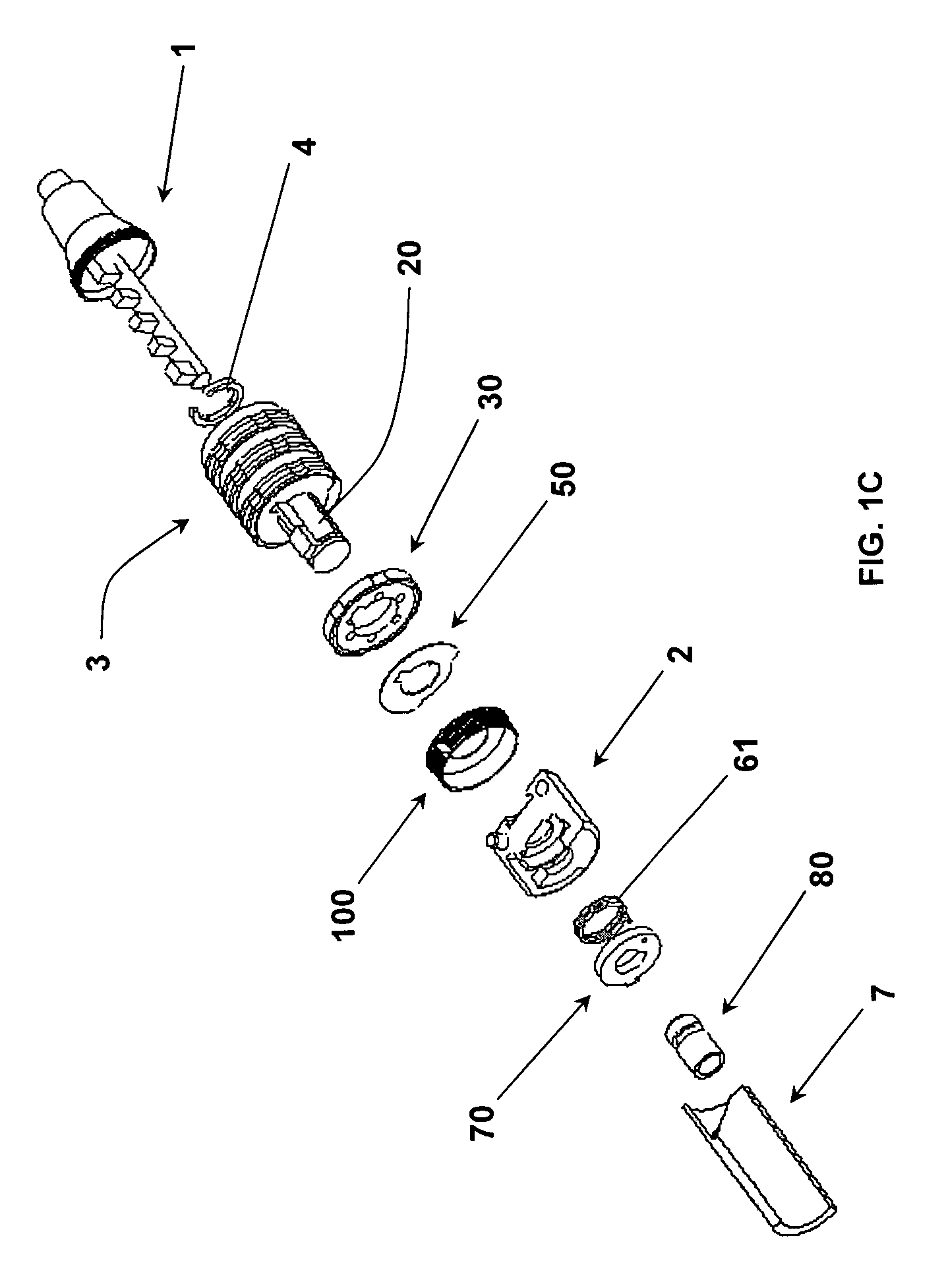Lightweight cable lock
a light-weight, cable-type technology, applied in the field of cable locks, can solve the problems of increasing the weight of the padlock, rigid structure, length and diameter of the cable, and reducing the practicality or usability of securing the locker
- Summary
- Abstract
- Description
- Claims
- Application Information
AI Technical Summary
Benefits of technology
Problems solved by technology
Method used
Image
Examples
Embodiment Construction
[0025]Referring to the figures, the preferred embodiment is showed in FIGS. 1A-C. The lock consists of a cable 6, which is permanently attached at one end to a key 1. The other end of the cable 6 is attached to a lock core housing 2, which in turn holds a hollow core shaft 20 in place. A lock assembly 3, formed from a plurality of numerical dials 30 interleaved with an equal number of tabbed washers 50, is fitted onto the shaft 20. The lock assembly 3 is held in place on the shaft 20 by affixing a retaining clip 4 onto the end of the shaft 20 distal from the core housing 2. The cable 6 is attached to the key 1 by fastening means that are well known in the art. The cable 6 is attached to the core housing 2 by inserting a swage key 80, which is permanently affixed to the end of the cable 6, into the end of the core housing 2 where a securing mechanism housed therein locks the cable 6 into place. The cable 6 may be removed by inserting the master unlock key 7 into the end of the core h...
PUM
 Login to View More
Login to View More Abstract
Description
Claims
Application Information
 Login to View More
Login to View More - R&D
- Intellectual Property
- Life Sciences
- Materials
- Tech Scout
- Unparalleled Data Quality
- Higher Quality Content
- 60% Fewer Hallucinations
Browse by: Latest US Patents, China's latest patents, Technical Efficacy Thesaurus, Application Domain, Technology Topic, Popular Technical Reports.
© 2025 PatSnap. All rights reserved.Legal|Privacy policy|Modern Slavery Act Transparency Statement|Sitemap|About US| Contact US: help@patsnap.com



